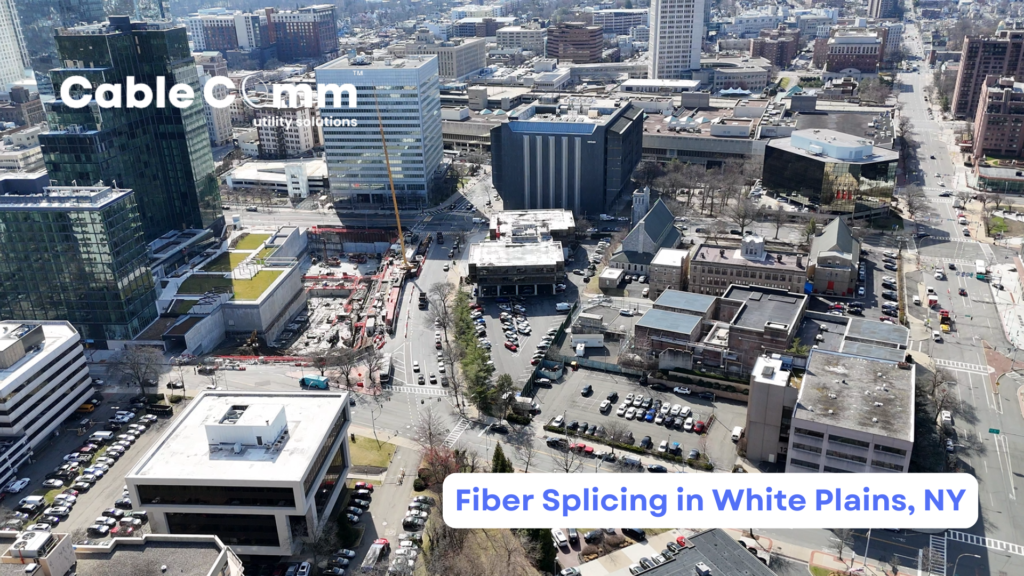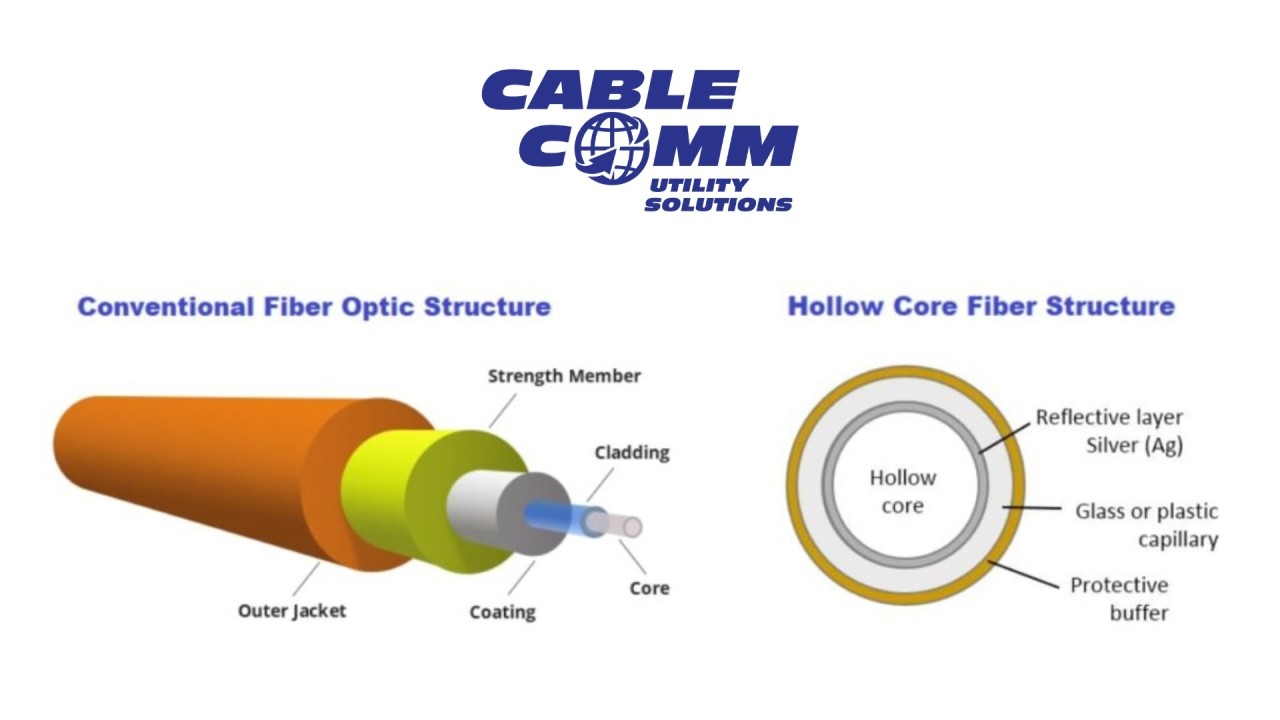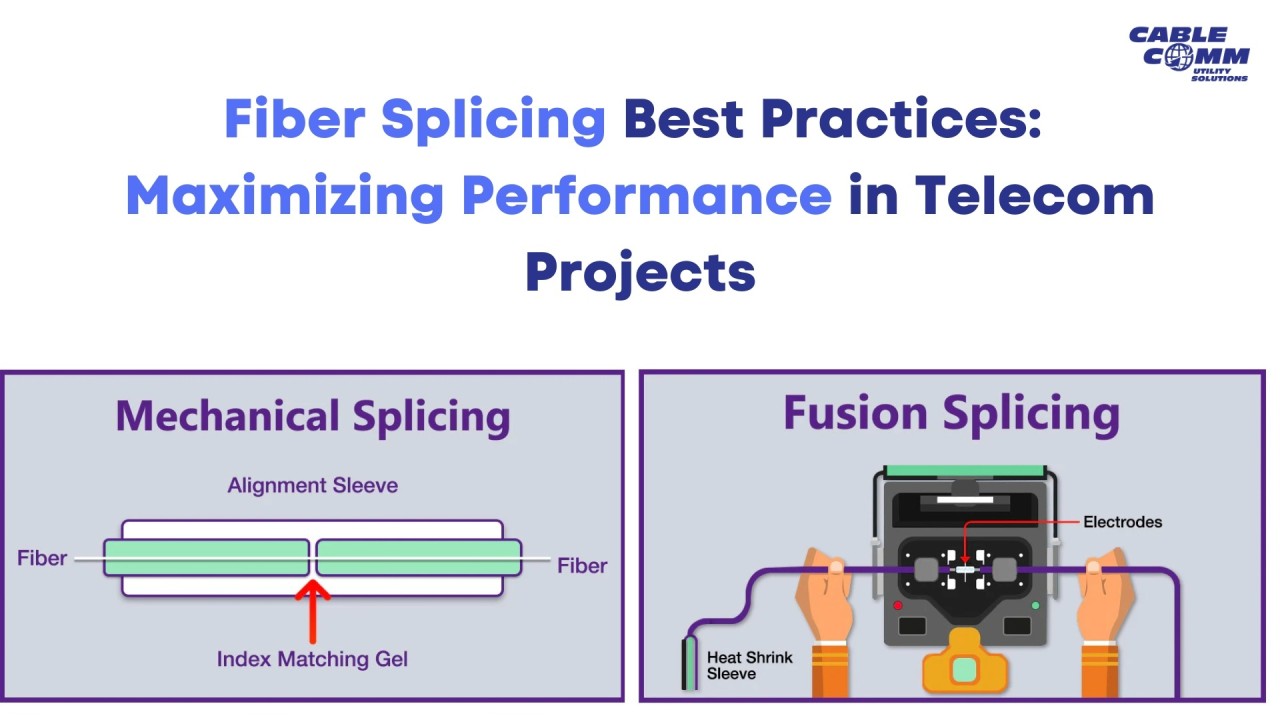Fiber splicing is often seen as a routine task—until you’re the one doing it. Whether inside a commercial high-rise or out in the field battling the elements, splicing is an intricate, high-stakes job that demands precision, adaptability, and expertise. With fiber networks expanding and technology advancing, the challenges of splicing are evolving, making experience and skill more critical than ever.
At Cable Comm, we’ve tackled every type of splicing scenario. From climate-controlled data centers to wind-swept roadside splice cases, every job presents unique hurdles that require more than just technical know-how. Let’s break down the complexities of splicing in different environments and why expert execution matters now more than ever.

1️⃣ Indoor Splicing: Precision Under Pressure
Splicing inside commercial buildings may seem easier than outdoor work—no wind, no rain—but the reality is far from simple.
🚧 Confined spaces. Telecom rooms, data centers, and server closets are often designed for equipment, not people. Maneuvering in these tight spaces while ensuring perfect splices is an art in itself.
🚧 Flawless execution. Indoor fiber networks power critical business operations. A bad splice inside a financial institution’s server room isn’t just a minor issue—it’s a potential disruption with significant consequences.
🚧 Cleanliness and precision. Indoor fiber splicing requires a dust-free environment. Any contamination in a splice tray can lead to failures down the line, making cleanliness just as important as technical accuracy.
2️⃣ Outdoor Splicing: Mastering Unpredictability
Splicing in the field introduces an entirely different set of challenges, many of which are outside a technician’s control.
🌧️ Weather conditions. Rain, wind, and extreme temperatures can impact not only the work environment but also the quality of the splices. “Spring can be deceiving,” says Dave, one of our seasoned techs. “One minute it’s calm, the next you’re shielding your fiber from dust and debris.”
🏗️ Unstable work environments. Unlike indoor setups, field splicing can mean working from a bucket truck, inside a manhole, or setting up makeshift workstations. “I’ve had to splice in the back of a van just to keep equipment safe from the elements,” recalls Lisa, a fiber splicing veteran.
⚡ Increasing fiber counts. Today’s networks require higher capacity, meaning splicing jobs often involve thousands of fibers. A single splice can make or break the integrity of a network, requiring a level of precision that can’t be rushed.
3️⃣ Balancing Speed with Quality
Deadlines are tight, and clients expect fast turnarounds. But in fiber splicing, speed can’t come at the cost of quality.
⏳ The cost of a bad splice. A poor-quality splice isn’t just a technical issue—it’s a financial one. Rework means downtime, extra labor, and additional costs that no project manager wants to face.
🎯 Efficiency without compromise. Experienced splicers know how to move quickly without cutting corners. “There’s no such thing as ‘good enough’ in fiber,” says Juan, one of our lead technicians. “It’s either right, or it’s not.”
4️⃣ Why Expertise Matters More Than Ever
With fiber infrastructure expanding at an unprecedented rate, the demand for skilled splicers is at an all-time high. The difference between a seamless network and constant outages often comes down to the quality of splicing.
At Cable Comm, we bring years of experience to every splice, whether inside a state-of-the-art data center or along a busy urban roadway. We understand that every connection matters, and we take pride in delivering reliable, high-performance fiber networks that businesses and communities depend on.
📩 Need expert splicing for your next project? Let’s connect.

Wrapping It Up: The Unseen Work Behind Every Fiber Network
At the end of the day, field splicing isn’t glamorous, but it’s what keeps everything running smoothly. It’s the work that no one notices until something goes wrong. But here’s the thing: the challenge is what makes it interesting. Every site is different, every splice is unique, and you learn something new on each job. There’s no “one-size-fits-all” answer when it comes to fiber splicing, and that’s what keeps it real.
As we head into spring, we’re ready to keep up the momentum, tackle whatever comes our way, and continue delivering the high-quality, reliable fiber networks that our clients depend on. Because, let’s face it, this job isn’t for everyone—it’s for those of us who don’t mind getting our hands a little dirty, working through challenges, and making sure everything works, no matter what.
📩 Got a splicing challenge that’s a little different from the norm? Let’s talk.



